Middleweight Intermediate Sportbike Shootout + Video

Honda CBR650F vs. Kawasaki Ninja 650 ABS vs. Yamaha FZ6R
Recently, we here at Motorcycle.com brought you one of our biggest tests to date, in the form of our 2014 Middleweight Mash-Up Six-Way Shootout. In it, we wrangled six bikes with minimal or non-existant fairings, ranging in displacement from 471cc ( Honda CB500F) to 690cc ( KTM 690 Duke) and put them to the test.
However, there was one bike in the mix that arguably didn’t belong. The Kawasaki Ninja 650, with its fully-faired bodywork was the odd man out – the Versys would’ve been a better fit, but Kawi had an extensively revised Versys – two of them, actually – in its pipeline. Sure, the Ninja’s engine was ripe for the party, but it wore too many clothes. And besides, taking it out would have given poor Burnsie one less motorcycle to write about – a welcome gift in the internet age of get-it-to-me-yesterday deadlines.
This got us thinking: not every rider out there wants a naked bike. Some would prefer the added wind protection offered by more substantial bodywork and a windscreen. So we invited the Ninja 650 back to play, and this time brought along some more appropriately clothed friends, in the form of Yamaha’s FZ6R and Honda’s new CBR650F.
Something To Consider
Whether any of these three motorcycles is for you is obviously a personal decision, and price will likely be a significant factor in your choice. At $7,199, the Ninja 650 is the least expensive bike here. Add ABS, like on our tester, and the price rises to $7,599. Still lower than the rest. Meanwhile, the Yamaha comes in at $7,790, and ABS isn’t even available as an option. Then comes the Honda. At $8,499 ($8,999 with ABS), it’s the most expensive of the bunch.
2014 Middleweight Mash-Up Six-Way Shootout! + Video
Judged on price alone, the Kawasaki makes a strong case for itself. Then again, if wind protection isn’t as big a concern, $6,990 for a Yamaha FZ-07 may be even more attractive than our trio here. But that’s a discussion for another time …
Long-time readers may remember a similar test we did in 2010, pitting the Kawasaki and Yamaha against the now-discontinued Suzuki GSX650F (if not, you can read about it here). Little has changed with the Yamaha since then, it receiving only Bold New Graphics, while the Kawasaki got a complete facelift, with new frame, bodywork, instruments and suspension changes. The engine is the same, but internal tweaks give it more midrange and better fuel economy than before. In 2010 we called the Suzuki portly and just a tad confusing, as it didn’t appeal to either new or experienced riders. With the Honda, we expect a more clearly defined purpose.
Coming Back Around
It’s been more than four years since that shootout, so if you need a refresher on the Yamaha, check out the link above. You can also click the above links for info on the Kawasaki, but click here to read about the latest version of the Ninja 650. Being a new bike, the Honda CBR650F may be relatively fresh in the minds of our readers. If not, Evans’ story above will get you up to speed.
To begin this comparison, as usual we start with the engines. Both the Kawasaki and Honda are liquid-cooled, inline 649cc units. The big difference is the Ninja makes due with two cylinders, while the Honda has four. Meanwhile, the Yamaha’s 600cc inline-Four is borrowed from the previous generation R6 sportbike, circa 2003-2005. The engine has been retuned for better midrange and more streetable power.
2014 Honda CBR650F First Ride Review
After running all three bikes on the Dynojet dyno at CM Motorsports, the Honda pumped out 76.6 hp at 10,900 rpm and 41.8 lb-ft. at 8900 rpm. The Kawasaki and Yamaha were close on power but trailed behind the Honda. The Ninja peaked at 64.5 hp at 8900 rpm and 43.0 lb-ft. at 7100, while the Yamaha made 65.4 hp at 9800 rpm and 38.5 lb-ft. at 8400 rpm.
On the road, differences between the three are negligible, at least in terms of power. However, what surprised us was the amount of vibration coming from the 650F. “The Honda’s inline-Four is ridiculously buzzy,” says Mismatched Glove Editor, Tom Roderick. “If it’s not numbing my hands, it’s numbing my testicles.” Tom can sometimes get carried away when talking about his nether regions, but we all agreed the Honda’s engine produces the most vibes through the bars. This is especially felt at 80 mph in sixth gear. Back it down a touch and the buzz becomes bearable. The Honda also suffers from slightly abrupt off/on throttle fueling, which we found annoying.
In stark contrast, the Ninja, and especially the Yamaha, engines are silky smooth. With the most torque available, and offered at lower engine speeds than the Fours, the Kawasaki’s 650 Twin had pleasurable grunt at the bottom end and midrange, something we appreciated on corner exits. And although “the Ninja’s parallel-Twin engine sounds painfully pedestrian at idle,” says E-i-C Duke, “it blats a nice baritone honk when wound out.”
The FZ6R’s distinctive four-cylinder wail is muffled by the large underslung exhaust, which Duke labeled the ugliest of the test. None of that matters though, because the 600cc mill reminds everyone of its supersport roots every chance it gets. Tom noted that the “FZ’s engine definitely punches above its weight … in fact, it hung with the torquier Ninja during a top gear roll-on contest.” In addition, it’s incredibly smooth as well. No matter the road or engine speed, hardly a buzz is felt through the bars or rubber-cushioned pegs.
Kawasaki Ninja 650 vs. Suzuki GSX650F vs. Yamaha FZ6R
With its unexpectedly strong performance and negligible vibes, the FZ6R, the oldest bike in this test, easily won the Engine category of the MO ScoreCard, besting the second place Ninja by almost four percentage points. The Honda, docked points for its vibration, brings up the rear, more than 10 percentage points adrift, which was a big surprise to us. The low-key FZ6R kinda got lost on our radar screens over the years, but it’s a seriously impressive engine for its intended purpose.
More Surprises
The Yamaha isn’t done impressing us in this test. In the handling department, we were pleasantly surprised at how well it navigated the twisty stuff. It flicks from side to side fluidly and quickly, a trait Duke credits to the 160-series rear Dunlop Roadsmart, 20mm narrower than the CBR’s Dunlop D222s. The FZ’s upright bars are placed nicely to provide good leverage, too.
The suspension is damped on the soft side, and other than rear preload, there’s not much you can do about it. It dives on the brakes and, if it had more grunt, would squat on acceleration. However, both front and rear are balanced in their damping, so at least both ends travel through their stroke in harmony, making it easier to predict what they will do next.
An identical 160mm Roadsmart graces the Kawasaki’s rear, too, but we weren’t quite as enthusiastic about the Ninja’s handling. The upright handlebars place the rider’s upper body nice and tall, and its rearset pegs are the last to drag of the trio. However, the “Ninja 650 suffers an identity crisis,” says Tom.
“Its tall, pull-back handlebars put a rider’s torso in a very comfortable, upright riding position,” says Roderick, “but the high-placed footpegs force a severe leg bend with a short seat-to-footpeg distance. The higher footpegs provide plenty of ground clearance, but the front end is vague because there’s no weight over the wheel due to the handlebars. So, the Ninja is neither sporty like the Honda nor comfy like the Yamaha.” Duke also noted the Ninja’s bar bend “felt funky” in his hands, but he noted that switching to a different bar is an easy fix.
The Honda, meanwhile, feels the most sporty of the group, its bars the lowest here and suspension the firmest. Sit on it, and the rider feels like they’re sitting atop the motorcycle rather than in it. The feeling mimics that of the CBR600RR. Unlike the 600RR, though, the 650F’s clip-ons are placed above the triple clamp, giving the rider a more upright position in relation. The tradeoff for having the lowest bar placement is having excellent communication with the front tire.
Unlike the other two, the 650F wears a rear 180-series Dunlop D222. We had no complaints about grip levels from all three bikes, nor any major handling complaints, but Duke did have a quibble with the Honda’s flickability. “It feels the least agile in this group,” he says. “I’d put part or most of the blame on its 180mm rear tire, which dulls responses at the bars compared to the skinnier 160s on the Ninja and 6R.”
Ultimately, the extra effort to flick the Honda around, and its least amount of cornering clearance, hurt its Handling score on the ScoreCard, with its 83.3% exactly five percentage points behind the Yamaha. The FZ’s margin of victory in this category was definitely unexpected. Meanwhile, the Kawasaki loses out, scoring 77.5% due to the negligible front-end feedback we felt.
It’s not all doom and gloom for the Honda. In fact, we praised it for having the best brakes of the bunch, with Kevin saying, “the brake package is of humble specifications, but it’s my favorite set of binders in this group. They’re not as powerful as high-end sets, but they offer a firm lever and highly predictable responses.” The Yamaha’s binders are a close second in terms of stopping power amongst all three testers, and the trio also agreed the brakes on the Ninja 650 were the least impressive here. It “takes a bunch more squeeze [on the Kawasaki] to get the same stopping results from the front brake,” says Tom.
We also admired the attention to detail Honda put in to the 650F. “The CBR looks decidedly upscale in this comparo, with a higher level of finish quality,” Duke says. “Like the others, the Honda uses cost-effective steel for its frame material, but its casting is contoured like a pricier aluminum frame that looks better than the steel tubes of the others. And its aluminum swingarm is much prettier than the steel swingers in this group, especially the FZ6R’s dated box-section design.”
The Daily Grind
While fun, exploring the performance potential of each bike in the canyons is but one part of the job. As all three bikes are meant to do a little bit of everything, how they perform during everyday tasks is equally important. Around town and on the highway, the upright riding position of the Kawasaki is enjoyable. Its windscreen, too, does the best job of deflecting wind up, over and around a rider’s chest.
However, the Ninja’s relatively rear-set pegs “compromise the amount of legroom for a rider,” says Kevin. It’s a complaint we’ve had about the Ninja 650 for some time, and if the shorties of the MO staff with 30-inch inseams are saying as much, those with longer legs will certainly be feeling the crunch after a short amount of time.
The Honda offers a much more relaxed knee bend, despite its sporty intentions, with Tom mentioning, “It may have the lowest bars, but it also has the most legroom.” Kevin and Tom also praised the Honda’s flat seat as being their most comfortable. However, the forward-most seating position of the Honda puts a mild strain on the wrists after a while. Combined with the buzzy engine that put some testers hands to sleep after an hour of freeway riding, and the CBR650F is not our choice of the trio to burn a lot of miles. YMMV, depending on your sensitivity to vibration.
In case you haven’t noticed the trend by now, the Yamaha FZ6R is the Goldilocks of this test, with its features rated as just right by our testers. The Yamaha hits the mark in the ergo department, striking a perfect balance between the cramped legroom of the Kawi and the sportbike tilt of the Honda. It also features my favorite saddle of the three, its thick cushioning best supporting my tush for long freeway drones. It also has the only adjustable seat; a reversible platform underneath allows it to raise 20mm from its standard 30.9-inch perch.
Age And Experience …
When it comes down to it, the Yamaha FZ6R is the winner of this test, but by the narrowest of margins over the Honda – by 0.23%, to be exact. Despite being the oldest bike here, the FZ6R won six categories of the ScoreCard: Engine, Transmission, Handling, Suspension, Ergos/Comfort and Grin Factor. The Honda won three categories by significant margin over the others – Cool Factor, Quality/Fit/Finish and Brakes – clawing back major ground in the overall rankings.
The perfect bike for you is ultimately your choice, and, of this trio, pricing might be a deciding factor. At $7,599, even with ABS, the Kawasaki Ninja 650 is still the least expensive motorcycle here. The 649cc Twin is a strong choice with lots of aftermarket support, and the chassis is a willing dance partner. All the issues we mentioned can be remedied via the aftermarket, too. “When it comes to best bang for your buck,” Tom notes, “the Ninja holds a clear advantage.”
Though it’s the most expensive bike here by a large margin, the Honda CBR650F exudes the typical Honda quality we’ve come to expect. Not to mention it looks the best of the bunch when viewed up close. Without having the Kawi and Yamaha to ride side-by-side, the handling differences likely wouldn’t register and if you’re worried about the forward lean, aftermarket solutions should be available in no time. “The CBR650F looks the most expensive because it is,” Kevin says. “If it was priced in line with its rivals, I’d give it the class win. If dollars are critical to your buying equation, the 650F’s vibration levels loom larger.”
That leaves the Yamaha FZ6R. Winner of this test in 2010, and the champ of this comparison, you could say the FZ6R has aged gracefully. Its perfect combination of power, handling, practicality and user-friendliness made it a hard combo to beat four years ago, and it’s still hard to beat today. Granted, its styling could use a little help, but if you’re a believer in function before form, then give the Yamaha serious consideration.
Honda CBR650F
+ Highs
- Superb fit and finish
- Great stopping power
- Best seating position for sporty riding
– Sighs
- Expensive
- Engine is buzzy at highway speeds
- Sporty position isn’t great for commuters
Kawasaki Ninja 650 ABS
+ Highs
- Cheapest bike here, even with ABS
- A close second in the aesthetics department
- Strong aftermarket support
– Sighs
- Cramped legroom
- Weak brakes
- Handling manners could be better
Yamaha FZ6R
+ Highs
- Best compromise between commuter and canyon carver
- Smoooooooth engine
- Most agile bike here
– Sighs
- ABS isn’t even an option
- Looks a bit dated
- Would an FZ-07 be a better buy?
Middleweight Intermediate Sportbike Shootout Scorecard | |||
| Category | Honda CBR650F | Kawasaki Ninja 650 | Yamaha FZ6R |
|---|---|---|---|
| Price | 84.7% | 100% | 92.4% |
| Weight | 100% | 99.1% | 98.1% |
| lb/hp | 100% | 83.3% | 83.3% |
| lb/lb-ft | 98.2% | 100% | 88.5% |
| Engine | 78.3% | 85.8% | 89.25% |
| Transmission/Clutch | 81.7% | 83.3% | 88.3% |
| Handling | 83.3% | 77.5% | 88.3% |
| Brakes | 86.7% | 69.2% | 80.0% |
| Suspension | 76.7% | 80.0% | 80.8% |
| Technologies | 43.3% | 43.3% | 36.7% |
| Instruments | 78.3% | 81.7% | 76.7% |
| Ergonomics/Comfort | 80.0% | 65.8% | 83.3% |
| Quality, Fit & Finish | 90.0% | 81.7% | 81.7% |
| Cool Factor | 82.5% | 74.2% | 70.0% |
| Grin Factor | 76.7% | 71.7% | 82.5% |
| Overall Score | 81.3% | 79.4% | 81.5% |
Middleweight Intermediate Sportbike Shootout Specs | |||
| Honda CBR650F | Kawasaki Ninja 650 | Yamaha FZ6R | |
| MSRP | $8499 (ABS: $8999) | $7199 (ABS: $7599) | $7,790.00 |
| Engine | |||
| Type | 649cc liquid-cooled inline-Four | 649cc liquid-cooled parallel Twin | 600cc liquid-cooled inline-Four |
| Bore and Stroke | 67.0 x 46. mm | 83.0 x 60.0mm | 65.5 x 44.5mm |
| Fuel System | PGM-FI Programmed Automatic Enrichment Circuit, with 42mm Throttle Bodies | EFI, two 38mm throttle bodies | Fuel injection |
| Ignition | Digital | Digital | Digital |
| Compression Ratio | 11.4:1 | 10.8:1 | 12.2:1 |
| Valve Train | DOHC; 4 valves per cylinder | DOHC; 4 valves per cylinder | DOHC; 4 valves per cylinder |
| Emissions | EPA, CARB compliant | EPA, CARB-compliant | EPA, CARB-compliant |
| Horsepower | 76.63 hp @ 10,900 rpm | 64.69 @ 8900 rpm | 65.35 @ 9800 rpm |
| Torque | 41.81 @ 8900 rpm | 43.04 @ 7100 rpm | 38.50 @ 8400 rpm |
| lb/hp | 6.02 | 7.19 | 7.19 |
| lb/torque | 11.03 | 10.80 | 12.20 |
| Drive Train | |||
| Transmission | 6-speed; multi-plate wet clutch | 6-speed, multi-plate wet clutch, positive neutral finder | 6-speed, multiplate wet clutch |
| Final Drive | Chain | Chain | Chain |
| Chassis/Suspension/Brakes | |||
| Front Suspension | 41mm fork; 4.3 in. travel | 41mm fork; 4.9 inches travel | 41mm Telescopic fork; 5.1-in travel |
| Rear Suspension | Pro-Link single shock, adjustable for spring preload; 5.0 inches travel | Single cantilevered shock; preload adjustable, 5.1 in. travel | Single, preload-adjustable shock; 5.1-in travel |
| Front Brake | Dual 320mm wave discs; 2-piston calipers | Dual 300mm petal discs, 2-piston calipers | Dual 298mm discs, 2-piston calipers |
| Rear Brake | 240mm wave disc; single-piston caliper | 220mm petal disc, single-piston caliper | 245mm disc, 1-piston caliper |
| Front Tire | 120/70-17 | 120/70-17 | 120/70 ZR-17 |
| Rear Tire | 180/55-17 | 160/60-17 | 160/60 ZR-17 |
| Dimensions | |||
| Rake/Trail | 25.3° / 3.98 in. (101.3mm) | 25° / 4.3 in. (110mm) | 26° / 4.1 in. (104mm) |
| Wheelbase | 57.0 in. | 55.5 in. | 56.7 in. |
| Seat Height | 31.9 in. | 31.7 in. | 30.9 in. |
| Curb Weight | 461 lb. | 465 lb | 470 lb. |
| Fuel Capacity | 4.5 gal. | 4.2 gal. | 4.6 gal. |
| Tested Fuel Economy | 42.5 mpg | 41.8 mpg | 38.4 mpg |
| Other | |||
| Available Colors | Red, Candy Blue, Matte Black Metallic | Candy Lime Green / Metallic Flat Spark Black, Metallic Spark Black / Metallic Flat Spark Black, Pearl Flat Stardust White / Metallic Flat Spark Black | Rapid Red/Raven |
| Warranty | One year, Transferable, unlimited-mileage limited warranty; extended coverage available with a Honda Protection Plan. | One year | One year |

Troy's been riding motorcycles and writing about them since 2006, getting his start at Rider Magazine. From there, he moved to Sport Rider Magazine before finally landing at Motorcycle.com in 2011. A lifelong gearhead who didn't fully immerse himself in motorcycles until his teenage years, Troy's interests have always been in technology, performance, and going fast. Naturally, racing was the perfect avenue to combine all three. Troy has been racing nearly as long as he's been riding and has competed at the AMA national level. He's also won multiple club races throughout the country, culminating in a Utah Sport Bike Association championship in 2011. He has been invited as a guest instructor for the Yamaha Champions Riding School, and when he's not out riding, he's either wrenching on bikes or watching MotoGP.
More by Troy Siahaan




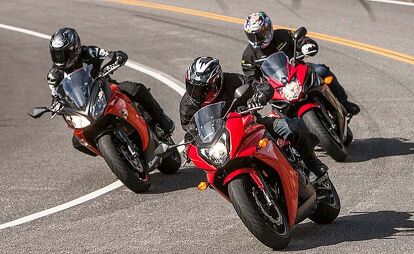


















































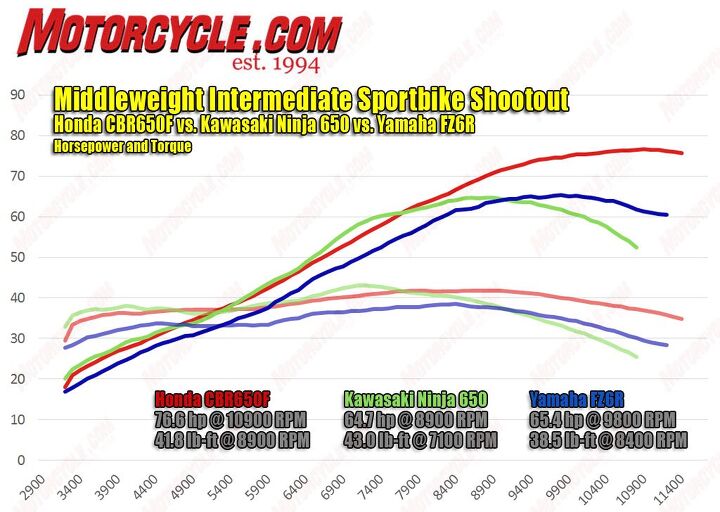























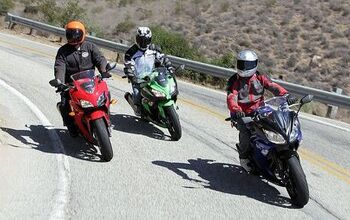
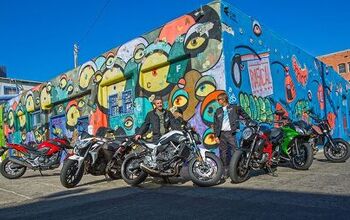
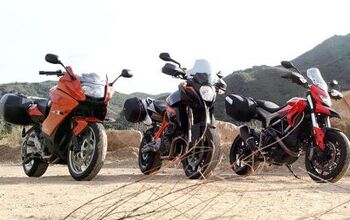






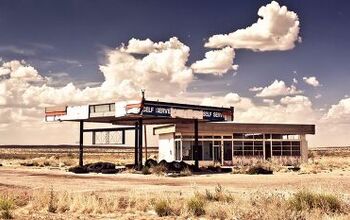




Comments
Join the conversation
Great review as always, now a difficult question to be answered. My local Yamaha shop has the FZ07 at 6990, and a 2013 leftover FZ6R for 6000. Which to pick I ask? What a choice, for me at least, highway riding to work for 20 minutes ultimately makes my decision I guess. Or maybe a fly screen? Too bad screens never get reviewed.
Do a new one with the 2017 models of cbr and ninja.